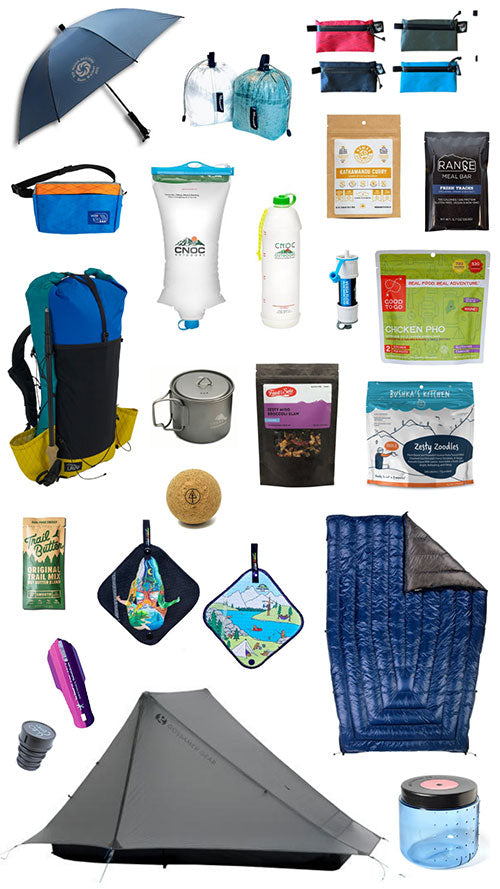
Learning about the 7 Principles of Leave No Trace (LNT) is important because we need to be informed and intentional about the decisions we’re making while recreating in wild places. The trail can’t speak for itself, so it calls on us to educate ourselves and others on the best ways to care for it.
LNT isn’t just for looks and preservation of the environment (though those are incredibly important), it also ensures the safety of people. Safety is an integral part of LNT because if someone is injured in any major way, drastic steps must be taken to get them treatment, which in the process often results in the degradation of backcountry resources. In addition, miserable hikers are more likely to violate LNT. So, put that fire out and pack that cozy wool base layer instead! You’re 7 Principles away from an A+ in LNT 101.
Principle #1: Plan Ahead and Prepare

This principle is all about anticipating what conditions are going to be like in the backcountry and then planning accordingly. It means having the gear and safety equipment to meet the demands of the environment, and doing the research ahead of time to get a sense of everything from trail to weather conditions. Keep in mind the other principles of LNT during this step.
Principle #2: Travel and Camp on Durable Surfaces

There’s a reason why you shouldn’t forge your own path when recreating in the backcountry, even if there’s technically an easier way down the mountain. Cutting switchbacks and stealth camping on top of growing vegetation results in negative ecological impacts, such as soil erosion and exposing barren ground. Pick a campsite that is durable and can sustain repeated use by visitors.
Principle #3: Dispose of Waste Properly

As anyone who has been through Great Smoky Mountains National Park on the Appalachian Trail knows, the sh*t fields are real and they are stinky. Bring your trowel, and use it, no matter how badly you have to go. Cat holes should be 6-8 inches deep; at least 200 feet from water sources, campsites, and the trail; and used toilet paper should be packed out.
Pivoting from human waste, always carry out your trash (and while you’re at it, really any trash you come across, whether or not you’re the responsible party). True story: I once picked up fake rose petals someone with no concern for LNT left scattered about on trail for a prom-posal. Yeah, this happened. And boy do I hope they said no!
Principle #4: Leave What You Find

This one is simple, and yet somehow wildflowers pulled up by the roots still seem to blanket Instagram. Set a good example both online and offline. Take only photos and memories, and leave nature where you found it.
Principle #5: Minimize Campfire Impacts

Wildfires in recent years, especially in the Western US haven’t just been bad, they’ve been devastating, with entire communities and ecosystems paying the price. The importance of proper campfire education is paramount if you’re considering building one in the backcountry. As visitors to the backcountry, we should judge whether a campfire is a good idea or not based on availability of wood and whether a fire ring is already present at the site, in addition to any local regulations that may be in effect, such as fire bans. If it is legal to have a campfire, always minimize your impacts collecting wood and never leave trash in a fire ring.
Principle #6: Respect Wildlife

This principle is important not only for the welfare of wildlife, but also for your own safety and the safety of those around you. The majority of altercations visitors have with wildlife are a result of people attempting to interact in one way or another with the animal. So, leave that baby fawn alone and store your food properly in bear country, because ‘a fed bear is a dead bear.’
Principle #7: Be Considerate of Others

Keeping your tramily’s volume down, yielding to hikers coming uphill, and keeping pets under control are all ways to be considerate of others on trail. Following other LNT Principles, such as disposing of waste properly and camping on durable surfaces, also falls into this category. Principle #7 really boils down to recognizing how each one of your actions impact others.
Congratulations! You’re now qualified to go out into the woods and share the knowledge you learned here today. You’ve all been lovely students (and thanks for the apple, how’d you know I love red delicious?!). Let’s commit to following these practices — for our safety, for the ecological health of natural places, and for the enjoyment of those who follow in our footsteps.
References
The Leave No Trace Center for Outdoor Ethics
Katie got bit by the thru-hiking bug in 2019 after completing a thru-hike of the AT. She met her partner at the NY/NJ border and rescued her husky, Thru, while on trail in VA. Since she has hiked the CT and LSHT and hopes to complete the Long Trail in 2021 and hit 10,000 miles by 25. www.thethrucrew.com

















1 comment
Kris S
I would like to see us add "Prevent the spread of invasive species: to the LNT principles. Whether this is making sure you don’t transport invasive seeds on your boats or invasive aquatic creatures in your boat, we need to be thinking about what a huge impact invasive can have on an eco system. Clean your equipment between uses in different areas. Dry your boat before moving to a new body of water. Don’t transport firewood. Don’t release live bait or dump bait water into a body of water.